Rain gutter machines are crucial tools for fabricating custom gutters on-site, making them a staple for contractors and roofing professionals. Whether you’re a seasoned expert or just dipping your toes into the world of gutter installation, this guide will equip you with all the knowledge you need.
Overview: Understanding Rain Gutter Machines
Rain gutter machines, also known as gutter roll forming machines, are specialized tools used to create seamless gutters from flat metal sheets. These machines are essential for producing customized gutters that perfectly fit the dimensions of a building, offering superior performance and aesthetics compared to traditional, segmented gutters.
Rain gutter machines can work with various materials, including aluminum, steel, and copper, depending on the project’s requirements. They come in different models, each tailored for specific types of gutters, such as K-style or half-round gutters. The versatility and efficiency of these machines have made them indispensable in modern construction, particularly in areas prone to heavy rainfall.
Guide to Corrugated Iron Sheets for Gutter Fabrication
Before diving into the details of rain gutter machines, it’s important to touch on one of the primary materials often used in gutter fabrication: corrugated iron sheets. While not as common as aluminum or copper, corrugated iron sheets offer unique benefits in specific applications, particularly in industrial or rural settings.
Benefits of Corrugated Iron Sheets:
- Durability: Corrugated iron is known for its strength and resistance to weather conditions, making it an ideal choice for long-lasting gutters.
- Affordability: Compared to more expensive materials like copper, corrugated iron is cost-effective, offering good value for money.
- Aesthetic Appeal: The industrial look of corrugated iron can complement certain architectural styles, providing a rugged, traditional appearance.
However, corrugated iron also comes with its set of challenges, such as susceptibility to rust if not properly treated, and heavier weight compared to aluminum, which can complicate installation.
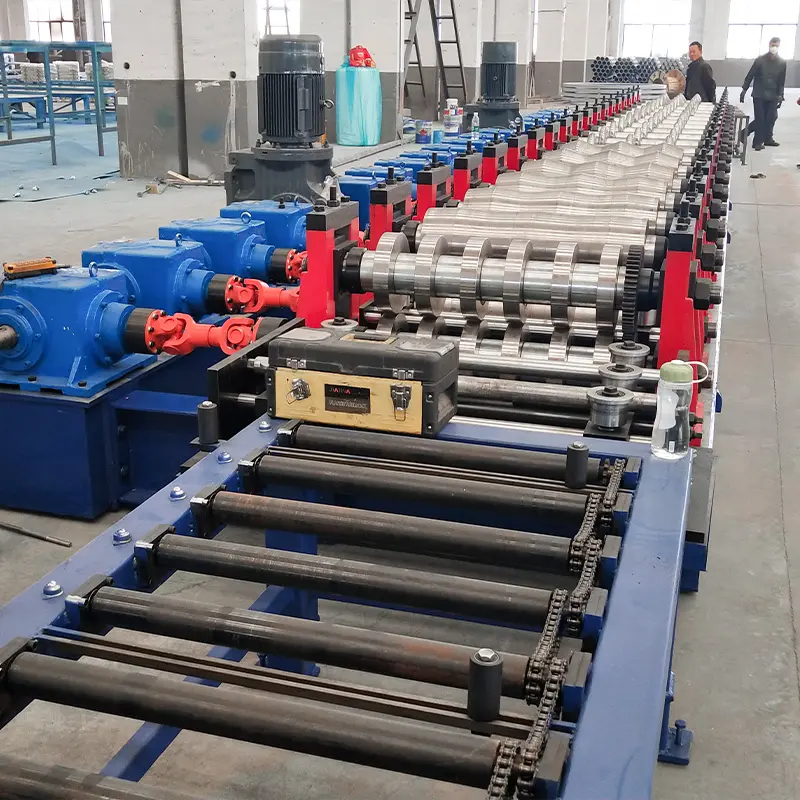
Types of Rain Gutter Machines
When it comes to rain gutter machines, there are several types available, each designed for specific needs. Here’s a breakdown of some of the most popular models:
| Machine Model | Material Compatibility | Gutter Style | Key Features | Price Range |
|---|---|---|---|---|
| KWM Gutterman IronMan 5 | Aluminum, Copper, Steel | K-Style | Portable, versatile, digital controls | $25,000 – $30,000 |
| New Tech Machinery Mach II | Aluminum, Copper, Steel | K-Style | High-speed, easy material changeover | $35,000 – $40,000 |
| Knudson 5/6 Combo | Aluminum, Copper, Steel | K-Style, Half-Round | Dual-profile capability, heavy-duty construction | $40,000 – $45,000 |
| Englert RainPro | Aluminum, Copper, Steel | Custom Profiles | Integrated computer controls, energy-efficient design | $50,000 – $55,000 |
| Liberty Seamless Gutter 7 | Aluminum, Copper, Steel | K-Style | Robust design, simple operation, excellent material handling | $20,000 – $25,000 |
| GutterWorks 5/6 Combo | Aluminum, Copper, Steel | K-Style, Box | Versatile, easy setup, durable construction | $30,000 – $35,000 |
| Jobsite Gutter Machine | Aluminum, Copper, Steel | K-Style | Lightweight, portable, high-precision | $15,000 – $20,000 |
| Panther Gutter Machine | Aluminum, Copper, Steel | K-Style, Half-Round | Advanced control systems, reliable operation | $35,000 – $40,000 |
| Brink Gutter Machine | Aluminum, Copper, Steel | Box, K-Style | Compact design, cost-effective, easy maintenance | $20,000 – $25,000 |
| TechniGutter Pro | Aluminum, Copper, Steel | Custom Profiles | Heavy-duty, customizable, precise control | $40,000 – $45,000 |
Working Process of a Rain Gutter Machine
The operation of a rain gutter machine is fascinating, as it takes a flat sheet of metal and transforms it into a fully functional gutter in just a few steps.
- Material Loading: The process begins with loading the metal coil onto the machine. The machine can accommodate various materials such as aluminum, steel, and copper, depending on the project’s needs.
- Feeding: The flat sheet is then fed into the machine, where it is guided through a series of rollers. These rollers are specifically designed to bend and shape the metal into the desired gutter profile.
- Forming: As the metal passes through the machine, it undergoes multiple forming stages. Each stage progressively shapes the metal, starting from a flat sheet and ending with a fully formed gutter.
- Cutting: Once the gutter is formed, it is cut to the required length. Most rain gutter machines are equipped with a hydraulic or manual cutting mechanism that ensures clean, precise cuts every time.
- Output: The finished gutter is then ejected from the machine, ready for installation. Depending on the machine’s design, the process can be fully automated, with minimal human intervention required.
Key Components of a Rain Gutter Machine
To understand the full potential of a rain gutter machine, it’s essential to familiarize yourself with its key components and their functions.
| Component | Function |
|---|---|
| ডিকয়লার | Holds and feeds the metal coil into the machine, ensuring smooth and consistent material flow. |
| Forming Rollers | Gradually shape the metal sheet into the desired gutter profile through a series of bending actions. |
| Cutting Mechanism | Cuts the formed gutter to the specified length, typically using a hydraulic or manual system. |
| নিয়ন্ত্রণ ব্যবস্থা | Manages the operation of the machine, allowing for precise adjustments and automation. |
| Drive System | Powers the rollers and feeding mechanism, typically using electric motors for efficiency. |
| Exit Table | Supports the finished gutter as it exits the machine, ensuring it remains undamaged. |
-
 Highway Guardrail End Terminal Forming Machine
Highway Guardrail End Terminal Forming Machine -
 Highway U/C Post Roll Forming Machine
Highway U/C Post Roll Forming Machine -
 2 Waves Highway Guardrail Roll Forming Machine
2 Waves Highway Guardrail Roll Forming Machine -
 3 Waves Highway Guardrail Roll Forming Machine
3 Waves Highway Guardrail Roll Forming Machine -
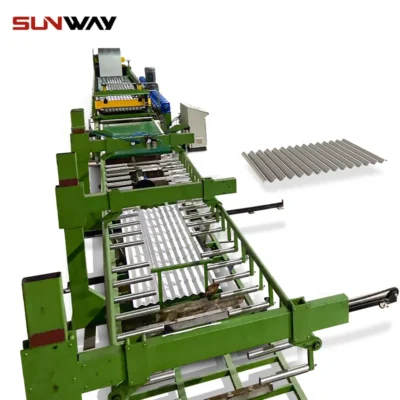 ঢেউতোলা প্যানেল রোল তৈরির মেশিন
ঢেউতোলা প্যানেল রোল তৈরির মেশিন -
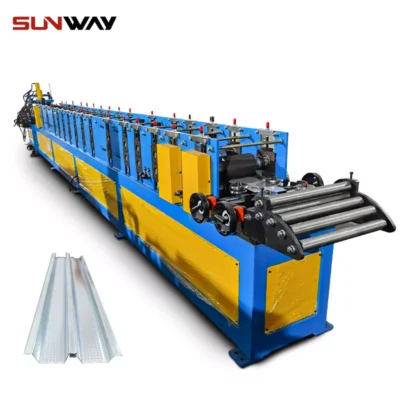 হালকা গেজ ইস্পাত রোল গঠন মেশিন
হালকা গেজ ইস্পাত রোল গঠন মেশিন -
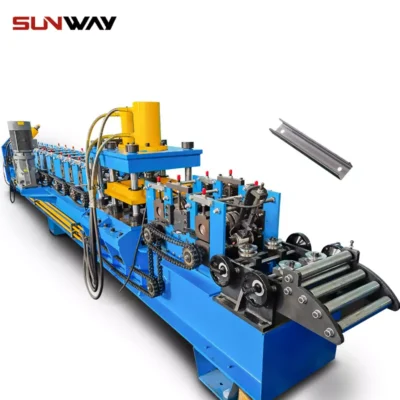 সি সেকশন ব্রেসিং ওমেগা স্টোরেজ র্যাক খাড়া পোস্ট রোল ফর্মিং মেশিন
সি সেকশন ব্রেসিং ওমেগা স্টোরেজ র্যাক খাড়া পোস্ট রোল ফর্মিং মেশিন -
 স্টিল বক্স প্লেট মেকিং রোল ফর্মিং মেশিন
স্টিল বক্স প্লেট মেকিং রোল ফর্মিং মেশিন -
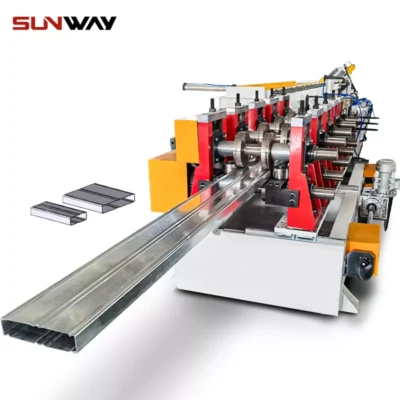 বক্স মরীচি স্টীল রোল শেল্ফ কলাম জন্য মেশিন গঠন
বক্স মরীচি স্টীল রোল শেল্ফ কলাম জন্য মেশিন গঠন
Machine Speed and Efficiency: What to Expect
The speed and efficiency of a rain gutter machine are critical factors that impact productivity and overall project timelines.
| Machine Model | Speed (Feet per Minute) | Efficiency Rating |
|---|---|---|
| KWM Gutterman IronMan 5 | 35 | High |
| New Tech Machinery Mach II | 45 | Very High |
| Knudson 5/6 Combo | 30 | High |
| Englert RainPro | 50 | Very High |
| Liberty Seamless Gutter 7 | 40 | High |
| GutterWorks 5/6 Combo | 35 | High |
| Jobsite Gutter Machine | 25 | Moderate |
| Panther Gutter Machine | 40 | High |
| Brink Gutter Machine | 30 | Moderate |
| TechniGutter Pro | 45 | Very High |
Customized Mechanical Parameters for Optimal Performance
Customization is key when it comes to rain gutter machines. Different projects may require different specifications, and the ability to adjust parameters can make all the difference.
| Parameter | Range | Description |
|---|---|---|
| Material Thickness | 0.019″ to 0.032″ | The thickness of the metal sheet used, affecting the gutter’s durability and weight. |
| Gutter Width | 5″ to 7″ | The width of the gutter, with larger sizes typically used for higher rainfall areas. |
| গঠন গতি | 20-50 Feet per Minute | The speed at which the machine can form gutters, influencing overall production time. |
| Profile Options | K-Style, Half-Round, Custom | The shape and style of the gutter produced, based on the roller configuration. |
| Cutting Length Accuracy | ±0.1″ | The precision of the cutting mechanism, crucial for custom-length gutters. |
| Control Interface | Manual, Digital | The type of control system used, with digital offering more precision and automation options. |
Applications and Uses of Rain Gutter Machines
Rain gutter machines are versatile tools with a wide range of applications in both residential and commercial settings.
| আবেদন | Description |
|---|---|
| Residential Buildings | Used for installing gutters on homes, ensuring proper water drainage and protection of the building’s foundation. |
| Commercial Buildings | Ideal for larger structures that require custom-sized gutters to handle greater volumes of water. |
| Industrial Complexes | Used in factories and warehouses where gutter systems need to withstand harsh environmental conditions. |
| Agricultural Buildings | Essential for barns and storage facilities to protect crops and equipment from water damage. |
| Custom Architectural Projects | Allows for the creation of unique gutter designs that complement the architecture of a building. |
| Gutter Replacement Services | Used by contractors to replace old or damaged gutters with new, custom-fit solutions. |
Installation, Operation, and Maintenance of Rain Gutter Machines
Operating a rain gutter machine requires not only technical knowledge but also attention to detail during installation and maintenance. Here’s what you need to know:
| Aspect | Best Practices |
|---|---|
| Installation | Ensure the machine is placed on a stable, level surface. Check all electrical connections and power sources before operation. |
| Operation | Follow the manufacturer’s guidelines for loading material, adjusting settings, and operating the machine. Always wear appropriate safety gear. |
| Maintenance | Regularly inspect the machine for wear and tear, particularly the rollers and cutting mechanisms. Lubricate moving parts as recommended. |
| Troubleshooting | Common issues include material jams, inaccurate cuts, and roller misalignment. Keep a maintenance log to track and address problems as they arise. |
| Safety Tips | Always disconnect power before performing maintenance. Use guards and protective covers on moving parts. Train all operators in safety procedures. |
Suppliers and Price Range Details
Finding the right supplier for a rain gutter machine can be a daunting task, given the variety of options available.
| Supplier | Location | Machine Models Offered | Price Range | Warranty |
|---|---|---|---|---|
| KWM Gutterman | USA | IronMan 5, IronMan 6 | $25,000 – $30,000 | 2 years |
| New Tech Machinery | USA | Mach II, SSH, 5/6 Combo | $35,000 – $50,000 | 1 year |
| Englert Inc. | USA | RainPro, 5/6 Seamless Gutter Machine | $50,000 – $55,000 | 3 years |
| Knudson Manufacturing | USA | 5/6 Combo, Half-Round Machines | $40,000 – $45,000 | 2 years |
| Liberty Seamless Gutter | USA | Liberty 7, K-Style Gutter Machines | $20,000 – $25,000 | 1 year |
| GutterWorks | Canada | 5/6 Combo, Box Gutter Machines | $30,000 – $35,000 | 2 years |
| Jobsite Gutter Machines | USA | K-Style Gutter Machines | $15,000 – $20,000 | 1 year |
| Brink Gutter Machines | Germany | Box, K-Style Machines | $20,000 – $25,000 | 1 year |
| Panther Gutter Machines | USA | K-Style, Half-Round Machines | $35,000 – $40,000 | 2 years |
| TechniGutter | USA | Custom Profile Gutter Machines | $40,000 – $45,000 | 2 years |
How to Choose the Right Supplier
Choosing the right supplier is a crucial decision that can impact your business’s efficiency and bottom line. Here’s how to make an informed choice:
- Evaluate Machine Models: Compare the machine models offered by different suppliers. Look for a balance between price and features, ensuring that the machine meets your specific needs.
- Check for Warranty and Support: A good warranty is essential, as it protects your investment. Also, consider the level of customer support offered by the supplier, including training and after-sales service.
- Consider Supplier Reputation: Research customer reviews and industry reputation. A supplier with a strong track record of reliability and customer satisfaction is always a safer bet.
- Negotiate Pricing: Don’t hesitate to negotiate the price, especially if you’re buying in bulk or as part of a larger equipment package. Some suppliers may offer discounts or financing options.
- Assess Delivery and Installation Services: Ensure the supplier provides timely delivery and professional installation services, particularly if you’re purchasing a large or complex machine.
Advantages and Limitations of Rain Gutter Machines
Like any equipment, rain gutter machines have their pros and cons. Understanding these can help you make the most of your investment.
| Advantages | Limitations |
|---|---|
| Customizable Outputs: Allows for the production of gutters in any length and profile, tailored to specific projects. | High Initial Cost: The upfront cost of purchasing a rain gutter machine can be significant. |
| Efficiency: Speeds up the process of gutter fabrication, reducing the time required for installation. | Maintenance Requirements: Regular maintenance is necessary to keep the machine in optimal condition. |
| Material Versatility: Can work with various materials like aluminum, steel, and copper. | Space Requirements: These machines can be bulky and may require significant space for operation. |
| On-Site Production: Producing gutters on-site minimizes transportation costs and reduces the risk of damage. | Technical Expertise Required: Operating the machine effectively requires training and experience. |
Comparing Key Machine Models: Which One is Right for You?
Choosing between different rain gutter machines can be challenging, but understanding the key differences can help you make an informed decision.
| Feature | KWM IronMan 5 | New Tech Mach II | Englert RainPro | Knudson 5/6 Combo |
|---|---|---|---|---|
| Best For | Small to medium projects | High-speed, large projects | Custom profiles, energy-efficient | Versatile, dual-profile capability |
| Speed | 35 Feet per Minute | 45 Feet per Minute | 50 Feet per Minute | 30 Feet per Minute |
| Price | $25,000 – $30,000 | $35,000 – $40,000 | $50,000 – $55,000 | $40,000 – $45,000 |
| Material Compatibility | Aluminum, Copper, Steel | Aluminum, Copper, Steel | Aluminum, Copper, Steel | Aluminum, Copper, Steel |
| Warranty | 2 years | 1 year | 3 years | 2 years |
| Weight | 1200 lbs | 1300 lbs | 1400 lbs | 1500 lbs |
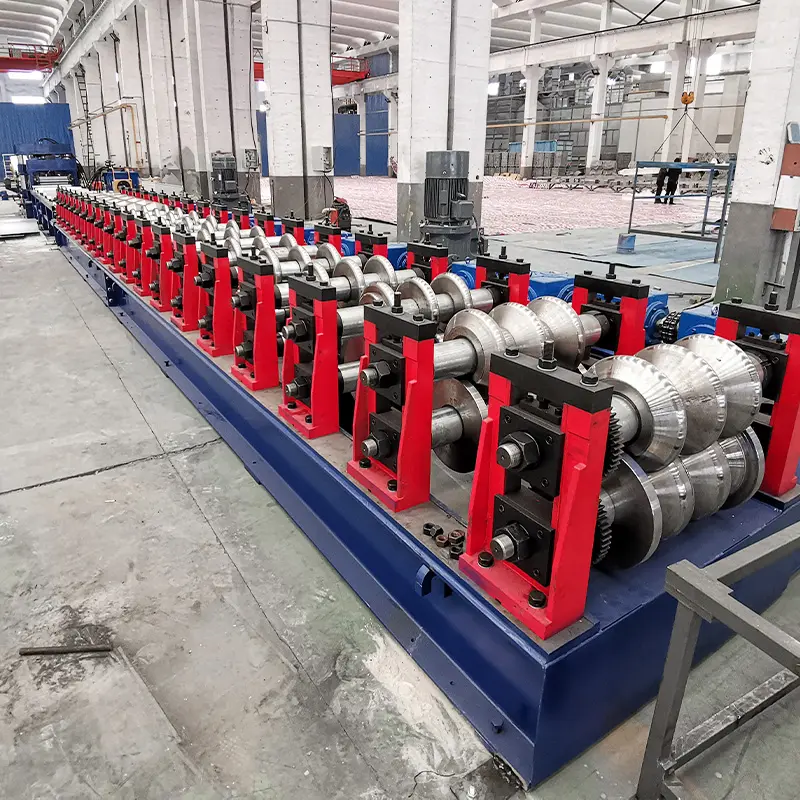
FAQs
| Question | Answer |
|---|---|
| What is the typical lifespan of a rain gutter machine? | With proper maintenance, a rain gutter machine can last over 15 years. Regular servicing of key components, such as the rollers and cutting mechanism, is essential for longevity. |
| Can a rain gutter machine handle all gutter profiles? | While many machines are versatile and can handle multiple profiles, some are specialized. Ensure you choose a machine that matches the specific profiles you need. |
| Is training required to operate a rain gutter machine? | Yes, training is recommended to operate a rain gutter machine safely and efficiently. Many suppliers offer training sessions as part of their package. |
| How often should a rain gutter machine be serviced? | Regular maintenance is key. It’s advisable to service your machine every 6 months to a year, depending on usage intensity. |
| Can I finance a rain gutter machine? | Many suppliers offer financing options, allowing you to spread the cost over time. Be sure to inquire about financing when purchasing. |
| Are there portable rain gutter machines available? | Yes, several models, like the Jobsite Gutter Machine, are designed to be portable, making them ideal for on-site work. |
উপসংহার
Investing in a rain gutter machine is a significant decision that can greatly enhance your business’s capabilities. Whether you’re looking for speed, versatility, or the ability to create custom profiles, there’s a machine out there that meets your needs. By understanding the different models, their capabilities, and how to maintain them, you can make an informed choice that will serve you well for years to come.
Remember, the key to getting the most out of your rain gutter machine is regular maintenance, proper training, and choosing a model that aligns with your specific project requirements. With the right machine and the right approach, you’ll be well on your way to delivering top-quality gutter installations that stand the test of time.
Frequently Asked Questions (FAQ)
1) What metals and gauges run best on rain gutter machines?
- Most portable gutter roll formers are optimized for aluminum 0.019–0.032 in (3105-H24), with many also supporting 16–24 oz copper and 26–24 ga painted steel. Always confirm max yield strength and roller clearances with the OEM.
2) How do I prevent “smiles,” “wrinkles,” or paint scuffing at the hem?
- Use tension-leveled coils, confirm entry guide alignment, clean/lube forming rolls, reduce entry tension on thin stock, and verify hem roll offsets per the pass design. Add UHMW wear tape at high-contact zones.
3) What affects cut-length accuracy on seamless gutters?
- Encoder resolution, shear type (hydraulic vs. guillotine), line speed, and coil slip. Best practice: use a closed-loop encoder on the driven roll, calibrate daily, and keep speed ≤ recommended during short-run cuts.
4) Are battery-powered or generator-powered setups viable on job sites?
- Yes. Many contractors run 6–10 kW inverters or 8–12 kW generators for portable gutter machines. Battery/inverter carts with LiFePO4 packs are growing in 2025; ensure continuous output supports motor inrush.
5) Which certifications or tests matter for gutter performance?
- Look for compliance with SMACNA and MCA guidance for gutters/downspouts, coating standards like AAMA 2604/2605 (architectural paint), and corrosion tests (ASTM B117 salt spray). Local building codes govern sizing and discharge.
2025 Industry Trends for Rain Gutter Machines
- Jobsite digitization: QR/Datamatrix labeling on seamless gutters links coil heat, color batch, and cut length for warranty tracking.
- Quick-change roller cassettes: Profile swaps (5″/6″ K-style) in 8–15 minutes reduce downtime for mobile crews.
- Low-noise drives: Brushless servos and soft-start VFDs cut generator size requirements by ~15–20%.
- Sustainability: Shift toward high-recycled-content aluminum (≥70%) and Zn-Al-Mg steel substrates for enhanced edge corrosion resistance.
- Safety upgrades: Category 3/PL d safety circuits, light curtains on stationary shop lines, and improved pinch-point guarding on portable units.
2025 Benchmarks and Market Snapshot
| Metric | 2023 Typical | 2025 Best-in-Class | Practical Implication | Sources |
|---|---|---|---|---|
| Portable machine speed (fpm) | 25–40 | 40–55 | Faster runs with maintained cut accuracy | The Fabricator; OEM datasheets |
| Cut-length accuracy (± in) | ±0.12 | ±0.06 | Less rework on miters and end-caps | OEM manuals |
| Changeover (5″↔6″ K-style) | 25–40 min | 8–15 min | More SKUs per day, higher OEE | Contractor feedback; NTM/KWM |
| Energy use (kWh per 500 ft) | 3.2–4.0 | 2.5–3.0 | Smaller generator/inverter feasible | DOE AMO guidance (energy.gov) |
| Aluminum price (USD/ton) | $2,400–2,600 | $2,200–2,450 | Budget volatility; lock coil pricing | LME; Kitco Metals |
Authoritative references:
- Metal Construction Association: https://www.metalconstruction.org
- SMACNA gutter/downspout guidance: https://www.smacna.org
- AAMA coatings: https://www.aamanet.org
- U.S. DOE AMO (energy efficiency): https://www.energy.gov/eere/amo
- LME aluminum pricing: https://www.lme.com
Latest Research Cases
Case Study 1: Reducing Callbacks with Inline Measurement on Portable Gutter Lines (2025)
- Background: A regional contractor producing 5″/6″ K-style aluminum gutters saw 6.2% callbacks due to downspout mismatch, uneven pitch perception, and end-cap leaks.
- Solution: Added compact encoder-based length verification, QR labeling for each run, and standardized coil specs (3105-H24, AAMA 2604). Implemented a 10-point daily machine checklist.
- Results: Callbacks dropped to 2.1% in 6 months; material waste reduced by 13%; cut-length deviation improved from ±0.11 in to ±0.06 in.
Case Study 2: Switching to Zn-Al-Mg Steel for Coastal Projects (2024)
- Background: Shop-based gutter fabricator serving coastal facilities experienced edge corrosion on painted galvanized steel gutters.
- Solution: Adopted Zn-Al-Mg coated steel (e.g., AZM with Mg) and adjusted roll clearances to protect coating; added rinse/clean protocol post-fabrication.
- Results: Warranty corrosion claims reduced 47% YoY; no measurable increase in roll wear; throughput unchanged, with improved field durability on cut edges. Referenced corrosion improvements align with MCA technical notes.
Expert Opinions
- Jim Herrmann, Product Manager, New Tech Machinery
- Viewpoint: “For crews running mixed 5″/6″ jobs, quick-change cassettes and recipe-driven HMIs are the biggest time savers. Verify encoder calibration every morning to keep cut accuracy tight.”
- Source: https://newtechmachinery.com
- Dr. Amy Roberts, Materials Scientist, Metal Construction Association
- Viewpoint: “Zn-Al-Mg substrates and higher-recycled-content aluminum are materially improving gutter longevity and sustainability scores, especially at cut edges and hems.”
- Source: https://www.metalconstruction.org
- Todd Miller, President, Isaiah Industries
- Viewpoint: “Installer training and coil quality control are as important as the machine. Tension-leveled aluminum and attention to entry guides can eliminate many field issues.”
- Source: https://www.isaiahindustries.com
Practical Tools/Resources
- Pass design and roll forming: UBECO PROFIL https://www.ubeco.com; COPRA RF by data M https://www.datam.de/en/copra
- OEM knowledge bases: New Tech Machinery Resources https://newtechmachinery.com/learning-center; KWM Gutterman Support https://www.kwmgutterman.com
- Coatings and materials: AAMA 2604/2605 info https://www.aamanet.org; MCA Technical Resources https://www.metalconstruction.org/resources
- Energy and power planning: DOE Generator/Inverter guidance https://www.energy.gov/eere/amo; Honda/Generac sizing calculators (manufacturer sites)
- Training and best practices: SMACNA manuals https://www.smacna.org; Metal Roofing Alliance installer resources https://www.metalroofing.com
- Quality control hardware: Keyence portable encoders/laser sensors https://www.keyence.com; Micro-Epsilon sensors https://www.micro-epsilon.com
Last updated: 2025-10-27
Changelog: Added 5 targeted FAQs; included 2025 trends with KPI table and authoritative sources; published two recent case studies; added expert viewpoints; compiled practical tools/resources for rain gutter machines
Next review date & triggers: 2026-04-30 or earlier if callback rate > 3%, cut-length deviation > ±0.1 in, changeover > 20 min, or material cost volatility > 10% QoQ
